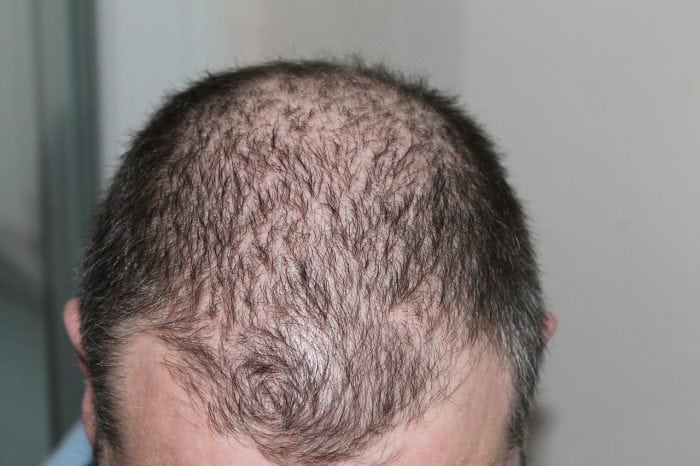
A healthy head of hair is a good indication of good health. In movies and television, men and women are depicted with lush and relatively beautiful heads of hair. Many hair products have commercials where the actor’s hair is almost unnaturally amazing.
Our focus on having a full head of hair has driven us to understand the consequences of losing that hair and how can we recover it. While hair loss is not a major health concern, it does create some stigma faced by those with some form of hair loss. Many people suffer from some form of baldness that makes them insecure and loses confidence in themselves because of the image we have created of what hair means to us.
This is particularly true of aging individuals as they lose their hair as a factor of aging. Along with the myriad of issues faced with getting older, losing your confidence because of hair loss should not be one of them.
From surgeries, pills, and herbal treatments, there are many alleged cures for baldness to restore the hair. Recently, researchers from Yokohama National Unversity has made a potential breakthrough in recovering hair that has been lost to conditions of baldness.
The Research
When a worker at McDonald goes to make some fries, the oil that they fry them in contains dimethylpolysiloxane (PDMS). This compound is added to the oil because it prevents the oil from foaming up. This helps to keep the employees safe from oil spitting on them and causing severe burns.
PDMS is found in many different compounds like those involved in skin care, silly putty, and hair products. As it is used in the oils at McDonald, it is also found in the fries, chicken nuggets, and hash browns. Its use is helped by the fact that is found to be not harmful to us or other organisms.
According to Junji Fukuda, Professor at Yokohama National University and one of the authors in the study, PDMS was used as a substrate material for the study because it was permeable to oxygen.
Using PDMS as a substrate, the researchers found that they could grow hair follicle germ (HFG) cell aggregates on a massive scale as they managed to create 5000 of these HFGs. HFGs are responsible for hair follicle development and growth and they had never been produced on such a scale before.
Using this breakthrough to make large amounts of HFGs, the researchers then transplanted these HFGs on to the back of nude mice. They found that the HFGs allowed for hairs to grow on the backs of these mice, which highlighted the ability of HFGs to reverse baldness.
The researchers credited this success to the PDMS that was used as the substrate because it allowed enough oxygen into the culture vessel. This was crucial to the formation of these HFGs.
With the ability to mass produce HFGs and the success of transplanting it on to mice, the researchers are planning on moving towards the next step of trying to recover hair in humans.
Existing Treatments
One of the most common treatments for hair loss is to use minoxidil, also known as Rogaine. While normally used to treat high blood pressure, many have used it to treat hair loss. Massaging it into the scalp twice a day is supposed to prevent further hair loss and promote new hair growth.
We do not know how minoxidil works for recovering hair, but there are some that have seen success using it. There is an ongoing debate on how effective it is, but it remains a popular option.
Another drug that is used for treating hair loss is Propecia, also known as finasteride, which is only used in men. It for men because the drug prevents testosterone from producing byproducts that result in slower hair growth. For optimal success, some men use both drugs in the hopes that it will work better.
An outdated treatment was scalp reduction. This was where people would have the bald scalp removed from their head. The remaining scalp would be sutured together.
As surgical options have improved, many people opt for surgery where hair follicles are taken from elsewhere and transplanted on to the areas without them.
Human Baldness
Hair loss is called alopecia and there are many different kinds of hair loss. The most common form of alopecia is androgenetic alopecia, also known as pattern baldness. Pattern baldness is a hereditary condition that we inherit from our parents. It affects 50 million men and 30 million women across the United States. In this condition, hair follicles get smaller as we age. This results in thinner and thinner hair until there is nothing left.
In men, pattern baldness is caused by testosterone byproducts that slow our hair follicles. Because of this, it can start after puberty in men and last for years or decades. In women, it occurs when they age and it is not entirely understood if it is related to sex hormones.
Another form of hair loss is called telogen effluvium. Telogen effluvium occurs when large amounts of hair follicles enter a resting phase of hair growth (telogen) and do not continue the hair growth cycle. This results in hair loss all over the scalp but does not lead to baldness.

Pixabay
Telogen effluvium is generally caused by medical events, such as childbirth or surgery, and other conditions, like thyroid imbalance or fever.
There are many other kinds of hair loss conditions that are caused by autoimmune problems, fungal infections, and inflammation among other causes.
With the success of mass producing HFGs in this study, there is new hope that many of these hair loss problems can be reversed and treated. Junji Fukuda noted that there was preliminary data showing that human HFG formation was possible using this method. As they move into the next stage, their success could radically change the way we deal with hair loss and help many people who are uncomfortable with current hair loss situation.









